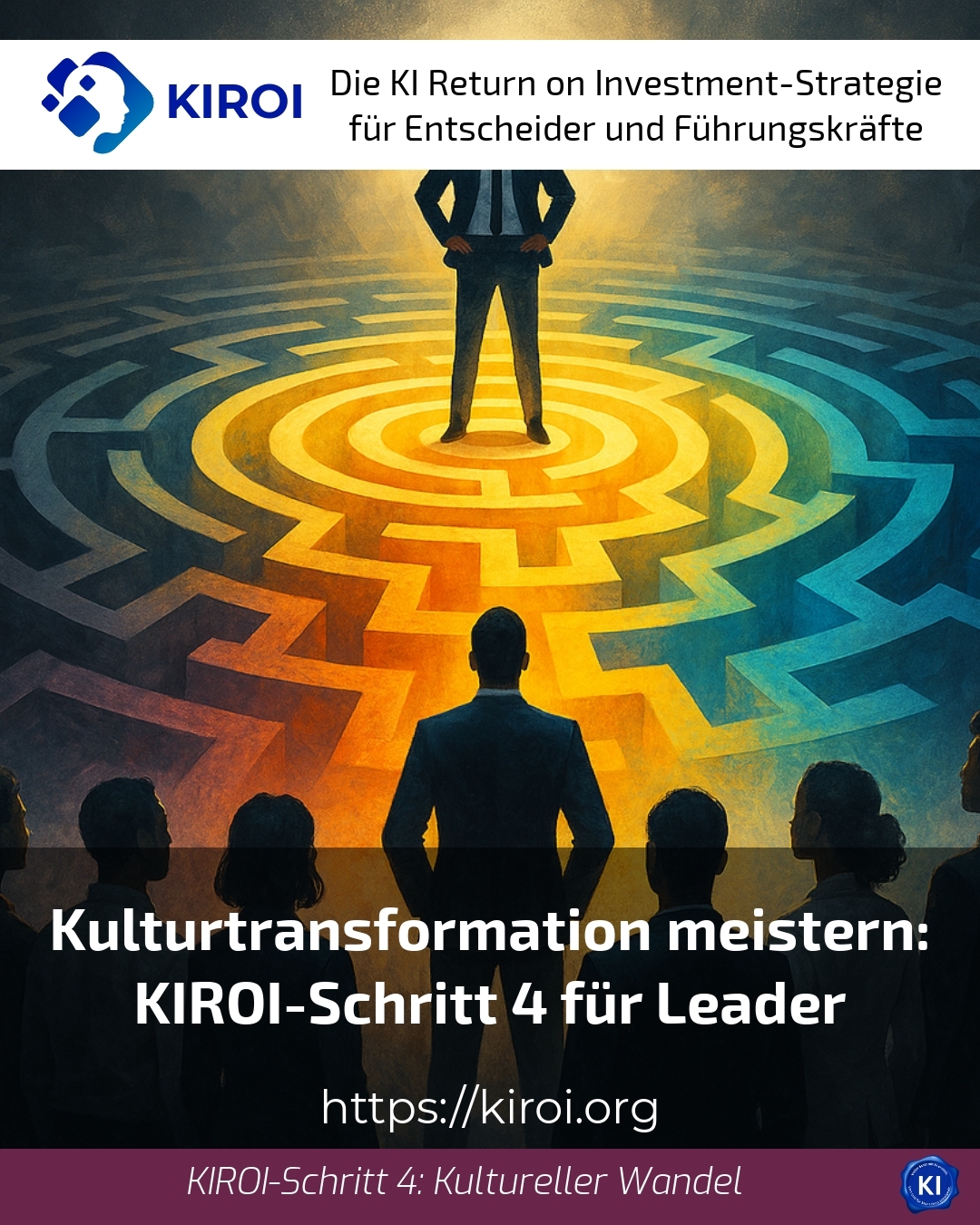The importance of active management in cultural transformation
A cultural transformation is a complex process that requires continuous attention. The fourth step involves actively managing and regularly measuring the change processes. This is the only way to ensure and support sustainable changes in the corporate culture. Managers in particular are faced with the challenge of establishing suitable instruments for measuring cultural development and using them consistently.
How managers successfully support cultural transformation
Managers are particularly challenged in their role as drivers of cultural change. They must provide impetus to support employees on the path to new values. It is crucial that culture is not seen as a short-term project, but as a long-term development process. Many report that their teams need clear indicators and concrete feedback on progress. Active management here means defining suitable metrics and reflecting on them together with employees at regular intervals.
Define measurable indicators for cultural development
Various indicators that can be collected regularly are suitable for measuring cultural transformation. For example, the frequency of desired values in the perception of managers and employees can be recorded. It is equally important to recognise limiting values that are still holding back the culture. Another indicator is the alignment of the current culture with the desired target culture. In this way, managers create transparency as to how far the path to the new culture has already been travelled and where impetus is still needed.
Practical examples from various industries
KIROI BEST PRACTICE at company XYZ (name changed due to NDA contract) In a medium-sized technology company, cultural management was implemented through annual surveys on corporate values followed by workshops. Managers and employees jointly reflected on how well the values lived corresponded to the target culture and developed specific measures to further embed them. This continuous support led to increased motivation and more open dialogue within the team.
KIROI BEST PRACTICE at ABC (name changed due to NDA contract) A service company implemented a measurement system in which the number of limiting values recognised and addressed was recorded every six months. Managers were also trained to actively develop a feedback culture. This approach supported the targeted management of cultural transformation and led to an increased willingness to change in various departments.
KIROI BEST PRACTICE at DEF (name changed due to NDA contract) In a manufacturing company, the coaching helped to combine the management of the cultural transformation with clear responsibilities. By defining cultural elements as measurable control parameters and transparent monitoring, managers were empowered to actively support the cultural change and make the changes visible. This increased acceptance and commitment throughout the company.
The role of communication and feedback loops
Alongside measurement, active management requires a consistent communication strategy. Managers are required to provide ongoing feedback and emphasise the importance of cultural transformation in everyday life. Clients often report that open dialogue about successes and challenges accelerates acceptance of the change. This creates a culture of dialogue that stabilises the change and leaves room for adjustments.
Ensuring cultural sustainability through continuous support
The challenge of active management also lies in keeping the process alive until the desired goals are achieved. Culture changes slowly, but managers can support this process through persistent commitment. KIROI coaching provides practical support here by providing impetus, introducing suitable management tools and networking those involved in the project. This creates a framework in which cultural transformation can be effectively designed and established.
My analysis
Active management is an indispensable component of successful cultural transformation. Managers gain the ability to act through targeted measurements and open communication. This enables them to support cultural change without making unrealistic promises. The KIROI methodology supports this step by taking individual situations into account and offering practical support. Cultural transformation is not a sprint, but a continuous process that can be made sustainable through committed leadership and suitable management tools.
Further links from the text above:
[1] Cultural change - cultural change step by step
[4] Cultural transformation - 4 steps and 4 networks
[7] Cultural transformation in 5 steps
For more information and if you have any questions, please contact Cultural transformation or read more blog posts on the topic Cultural transformation here.















